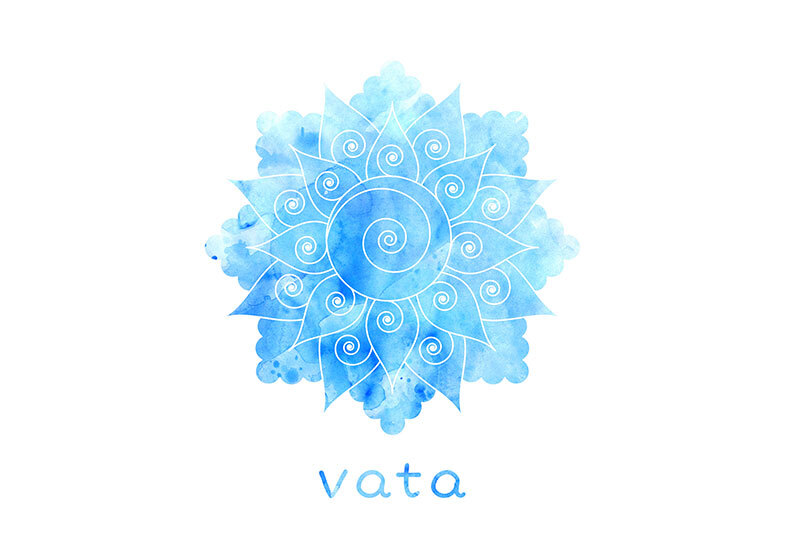Ayurveda is made up of two words; one is ‘Ayush’ which means ‘life’ and the other is’ Veda’, which means science. If you say it in an easy way, Ayurveda means the science of life. So basically Ayurveda tells us what is the construction of our body, and what kind of lifestyle should we adopt to keep ourselves healthy.
As per Ayurveda, there are three types of doshas present in the body, known as tridoshas in Ayurveda. These are Vata, Pitta and Kapha. The health of our bodies depends on these three doshas. Everything is fine when these three doshas are in balance. However, when any of these three are out of balance, diseases begin to develop. That’s why they are called doshas because these have the tendency to fluctuate.
Table of Contents
ToggleBody types according to Ayurveda
The human body is made up of five elements, namely water, fire, air, earth, and space. In Vata, Pitta, and Kapha. Out of all these elements, 2-2 elements are present.
Vata:

As Vata is made up of space and air, therefore, the nature of Vata is dynamic or movable. It is one of the more important dosha among the three doshas. All the movements in our body are possible due to Vata, such as blood circulation and sweating, etc. Since Vata is present in every empty space of our body, but its main place is in our stomach. Vata is so powerful that it also transmits other doshas from one place to another, and if any dosha is already there in the body then it increases it. People with aggravated Vata dosha show symptoms such as skin dryness, weakness, lack of sleep, irritability, forgetting things quickly, and getting scared easily.
Pitta:

Pitta is made of ‘fire and water’, hence Pitta produces heat in the body. Mainly its place is in our stomach and small intestine. It controls all the enzymes and hormones in the body. That is, whatever our body takes in through eating or breathing, it does the job of converting it into blood, bone marrow, or urine. Pitta dosha simply means disturbances in the digestive system. People with aggravated Pitta dosha symptoms include an inability to tolerate heat, early greying of hair, burning sensations in the body, sweating, and excessive urine output.
Kapha:

Similarly, Kapha dosha is made up of earth and water elements. It comes at number three according to importance and order. Kapha dosha governs our mental and physical abilities, immune system, patience, and knowledge. Mainly its place is in our stomach and chest. Apart from this, it also has its place above the throat, head, and neck. People with the Kapha dosha have symptoms like loss of appetite, thirst, heat, decreased sweating, shortness of breath, and excessive sleep.
According to the nature of Doshas, our body remains healthy only by adopting a perfect lifestyle. To understand what time of day to eat, which fruit or vegetable to eat in which season, what to eat according to our age, or how to change our lifestyle. We need to better understand the doshas because they have diverse effects on people at different ages, times of day, and seasons.
Effect of seasons on Doshas
Vata Dosha:
Talking about seasons, Pitta is most balanced in winters and most dis-balanced in summers because of its hot nature. Similarly, Kapha remains balanced in summers and dis-balanced in winters as it is based on the water element and gets affected by the cold weather outside. Due to the dynamic nature of Vata, it is most affected in the rainy season, while it has a minor effect in summer and winter also. So Vata personalities should be careful in every season.
Pitta Dosha:
According to the life cycle, Kapha is more effective in childhood, Pitta in youth, and Vata in old age.
Similarly, the effect of Vata, Pitta, and Kapha changes after every four hours of the day. In both the 12 hours, the effect of Kapha from 6 to 10 PM, Pitta from 10 to 2 PM, and Vata from 2 to 6 PM is more effective. If we look at this point scientifically, then the time of Kapha is from 6 to 10 in the morning and from 6 to 10 in the evening. At this time, naturally, the temperature of the weather is low and the environment remains comparatively cold.
Kapha Dosha
In such a situation, if you get up early in the morning, exercise and drink Kadha made from hot things like ginger-pepper to keep the phlegm balanced. Take a walk in the evening from 6 to 10 o’clock and eat hot food on time and this will help in balancing kapha dosha. Pitta dosha is dominant from 10 a.m. to 2 p.m. It’s hot outside during this time, so if you eat a heavy meal, it will be easily digestible as the nature of Pitta is also hot. And the digestive system heals best between the hours of 10 and 2 a.m.
We can also say that after a whole day’s workout, the digestive system needs rest at this time. So after eating light food at the right time at night, one should sleep by 10 o’clock. Similarly, the time of Vata is from 2 pm to 6 pm. so at this time, take some rest after lunch and then start with your evening routine.
Bottom Line
Since Vata is dynamic in nature, your inconsistent afternoon and evening routines can easily aggravate and disbalance it. If you start your day with meditation by waking up early in the morning at Brahmamuhurta, which is supposed to be 4 in the morning, you can channel Vata as well as balance Pitta and Kapha doshas. Hence, in Ayurveda, rising to Brahmamuhurta has a special significance.
Therefore, we should choose food for ourselves only after understanding our body type according to the tridosha. So it is best to follow an Ayurvedic lifestyle as per our doshas to stay healthy and agile.
For More Updates Watch This Video

Priyanka Khurana Goyal is a prominent Indian figure renowned for her diverse accomplishments and contributions across various fields.. Read more


